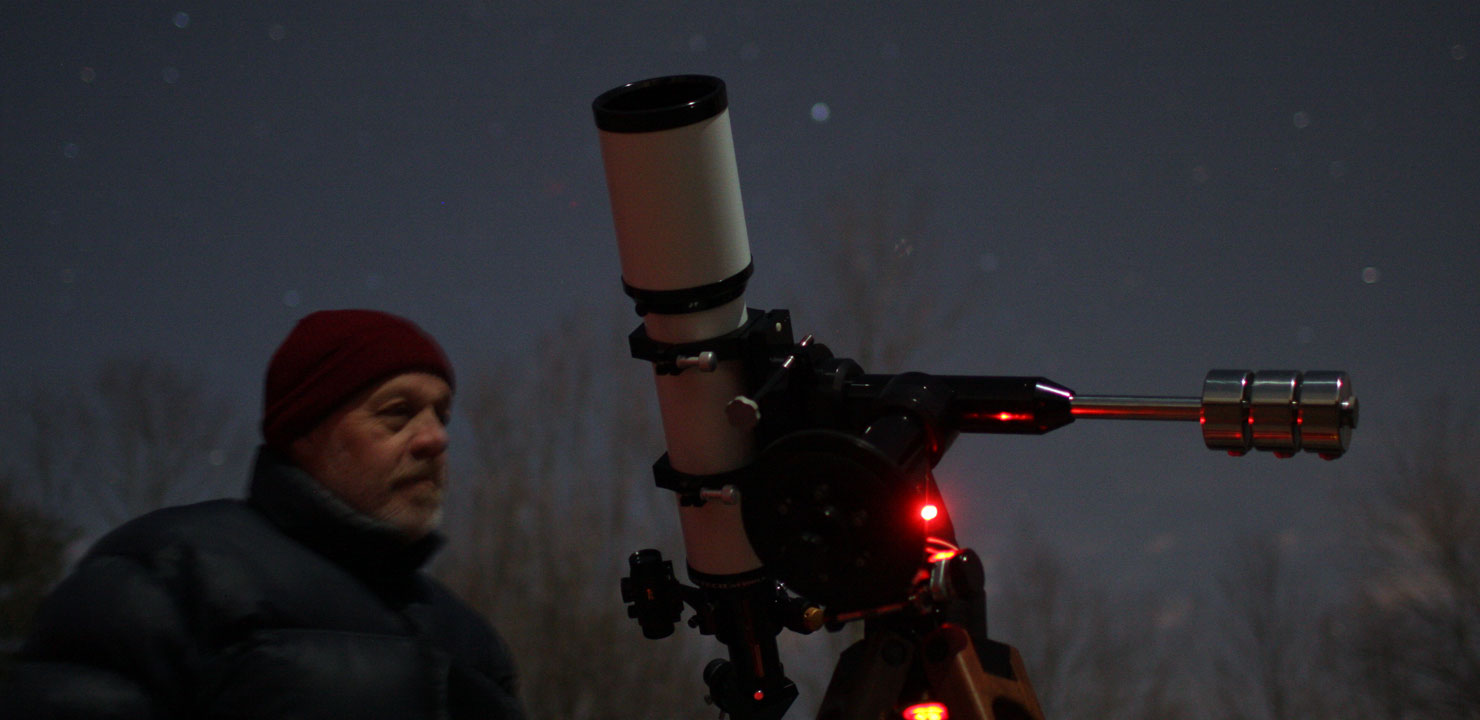
Jupiter and Bright Moon on a Mid-Winter Night
by Dave Huestis
Some scattered high thin clouds and some lower level puffy clouds greeted me as I arrived at Seagrave Observatory around 6:45 pm for our February 4 public night. It was my night to volunteer on the Clark refractor and I looked forward to showing our guests great views of Jupiter.
When I arrived Jim Brenek was already out in the back field with his refractor. He had specifically set up early to catch a glimpse of Venus, which he described as about 5/8's illuminated. Jim Hendrickson had arrived just before I did.
Conrad Cardano soon showed up and opened up the 12-inch Meade.
Two women came early and waited in their car until I opened up the Clark.
A few clouds occaisionally swept by Jupiter, but they were thin enough as not to severely affect observing.
The four Galilean satellites were easily visible as I focussed a 25 mm eyepiece (107 power) on this beautiful world. The drive worked fine for a while, though it still has the little jerking motion. Then the governor slowed down and the drag pin no longer hit the drag hook. The image in the eyepiece started to drift. Then the governor would speed up again and once the speed was back to normal, the image stayed put, even under a medium magnification eyepiece (18 mm) proving 148 power.
Europa was by iself on one side of Juputer, with Io, Ganymede and Callisto on the other. As the night progressed Io was easily seen to be moving towards Jupiter's disk. At 9pm it was really close. (Had we remained a little while longer we would have viewed Io as it disappeared behind Jupiter's disk (called an occultation).
Another woman and her two young boys entered the dome before the two ladies came up to view.
It was about 40 degrees out there in the dome.
The oldest boy, nine years old, was really impressed with the Clark. Perhaps he will become a Junior member in the future. As usual I gave them and the two women the general historical overview of Seagrave, the Clark and Skyscrapers.
Both of these groups eventually went out back to view with Conrad and Jim Brenek. They were treated to great views of the Moon and Pleiades, just to name a few prime objects. Fortunately the clouds pushed a little further south of the observaotry, providing cloud-free looks.
Four more couiples arrived throughout the evening, including a young lady and her companion. She has visited seveal times in the past. She asks very good questions and generally seems very interested. I hope she will consider joining Skyscrapers.
By 8:30 pm the public had all left. Jim Brenek had packed up his equipment and headed home. Conrad followed just before 9:00 pm. Jim Henrickson and I closed up the Clark soon thereafter. The temp had dropped to about 28 degrees and the clouds had receeded even further south of Seagrave.
Everyone who visited said they would be back to observe Mars and Saturn in the future.
As Jim and I were leaving Mars had risen above the eastern clouds and could be seen from the parking lot.
I look forward to training the Clark on it in the coming weeks as it approaches the Earth for a close encounter on March 5,






